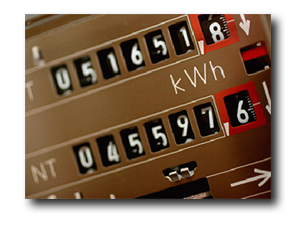Watt, watt Crete, watt heure ?
The production of a photovoltaic cell obviously depends on the sun. Therefore it is impossible to say in advance how much electricity a solar panel produce : production will be different depending on where you install it, and even according to the position you give it.
The objective of this article is to help you assess the actual production to where you plan to install your solar panels.
Watt, watt Crete, watt heure ?
The power of solar panels is expressed in watt Crete : a panel 1kWc product 1kW power under standard conditions, The energy is therefore 1 kWh per hour in these conditions even. But remember this is only true in a laboratory, for an actual installation, there is no direct link between Wp, Watts et watt heure !
The energy produced in real conditions will generally be much lower than would have been produced under standard conditions. It will depend mainly 3 factors :

- the daily global radiation, that is to say the sun
- the position of the solar panels (orientation and tilt)
- temperature
There are two ways to calculate the production :
- You can use a simulation of sunshine, for example, that the European Union offers free to calculate the solar potential anywhere in Europe or Africa
- If you can not find a tool that suits your needs or if you want to see for yourself the results provided by the software, you must use the method below.
Step : sun
 To start you need to look what, in your area, the amount of energy received from the sun every day. This quantity is called daily irradiation or total daily integrated solar radiation or radiation, it is expressed in Watt-hours per square meter per day (Wh/m²/j) for a given inclination.
To start you need to look what, in your area, the amount of energy received from the sun every day. This quantity is called daily irradiation or total daily integrated solar radiation or radiation, it is expressed in Watt-hours per square meter per day (Wh/m²/j) for a given inclination.
This data can be obtained from meteorological services or professional (eg your supplier of solar panels). Numerous measures are available in the database of the Canadian RETScreen.
The sun will obviously vary depending on the season, it is often provided on a monthly average. In practice it is mainly the value of the worst month (winter in temperate zones, during the rainy seasons in equatorial and tropical zones) that will interest us as objective is to design a solar system capable of covering the energy needs throughout the year : who can do more can do less, sizing is generally based on the worst month.
The value of the best months may also be interesting to get an idea of the maximum output of the system.
The value also depends on the angle at which the measurement was made. Usually measured on the horizontal. If you want to get the radiation from another angle, simply divide the value horizontally by the cosine of the angle you want.
Related to the orientation of the panels losses
The angle between the sun and the solar panel is called angle of incidence (noted α). Production is maximal if the sun's rays reach the surface of the panel perpendicular to noon (solar time).
| Inclination of 90 ° with respect to sunlight (center) = production optimale |
Generally, we seek to optimize production during the month of lowest sunshine : it is necessary that the sun's rays are perpendicular to the panel during this month.
To learn more about this see the article : Find the optimal orientation and tilt for a solar panel
When the sun's rays do not reach the panel under the optimum angle, yield is approximately : sinus (a)
Temperature-related losses
The peak power is given for a temperature of 25 ° C. If the actual temperature is above this value, and take into account faudra. Losses will then 0.4% by degrees to a mono or polycrystalline cells (The most common) and 0.3% by degrees to other technologies.
Attention : it is the temperature of the solar panel and not the ambient temperature. The panel temperature is higher than the air temperature (for example 10 ° C).
To conclude
The energy will be provided for 1kWc installed is approximately :
Daily global radiation x sin(a) x (1 – (temperature – 25) x 0.004)


